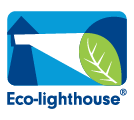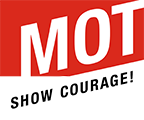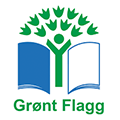Inclusion Policy
Date amended: May 2021
“Inclusion is an ongoing process that aims to increase access and engagement in learning for all students by identifying and removing barriers.” Learning Diversity in the International Baccalaureate Programme (p.3)
i) Philosophy
Our guiding principle is to assist each child to develop to his/her full potential, to become a versatile, effective and responsible citizen of the world. We endeavour to provide our students with appropriate educational programs that are challenging yet geared to their capabilities and needs. As an inclusive school we strive to ensure our environment is a place where everyone belongs, supports, and is supported by his or her peers and other members of the school community. We will do this within a friendly and welcoming, healthy and protective, and gender sensitive environment, delivering curricular programmes developed and authorized by the International Baccalaureate Organization (IBO), with English as the medium of instruction. WIthin this framework, we aim to provide Quality First Teaching for all our children. This includes appropriate differentiation for individual children, high quality resources, and effective use of additional adult support. We also aim to identify and break down possible barriers to learning so that all our children experience success.
ii) Adherence to Norwegian Law and International Baccalaureate Standards and Practices
Friskoleloven
§ 3-4a.Tilpassa opplæring og tidleg innsats
Opplæringa skal tilpassast evnene og føresetnadene hjå den enkelte eleven.
På 1. til 4. årstrinn skal skolen sørgje for at den tilpassa opplæringa i norsk eller samisk og matematikk mellom anna inneber særleg høg lærartettleik og særleg er retta mot elevar med svak dugleik i lesing og rekning.
§ 3-6.Spesialundervisning og pedagogisk-psykologisk teneste
Opplæringslova § 5-1 om rett til spesialundervisning, § 5-3 om sakkunnig vurdering, § 5-4 om saksbehandlinga i samband med vedtak om spesialundervisning og § 5-5 om unntak frå reglane om innhaldet i opplæringa og om kompetansekrav gjeld tilsvarande.
EDIT - August 2018
Revision August 2018
Stortinget har vedtatt endringer i opplæringsloven og friskoleloven med virkning fra 1. august 2018.
Endringene innebærer blant annet at skolene skal sørge for at elever på 1. til 4. årstrinn som står i fare for å bli hengende etter i lesing, skriving eller regning, raskt skal få tilbud om intensiv opplæring. Opplæringen kan gis som eneundervisning i en kort periode. Dette forutsetter at hensynet til elevens beste taler for det.
The government has adopted amendments to the Education Act and the Norwegian Solvency Act with effect from 1 August 2018.
The changes imply, among other things, that the school will endeavour to ensure that students in the 1st to 4th grade who are stagnating at reading, writing or billing, will soon be offered a focussed education. The training can be given as a single education for a short period of time.
IB programme standards and practices (2014)
-
A9 The school supports access for students to the IB programme(s) and philosophy.
-
B1:5 The school develops and implements an inclusion/special educational needs policy that is consistent with IB expectations.
-
B2:8 The school provides support for its students with learning and/or special educational needs and support for their teachers.
-
C1:6 Collaborative planning and reflection incorporates differentiation for students’ learning needs and styles.
-
C3:10 Teaching and learning differentiates instruction to meet students’ learning needs and styles.
iii) Psychosocial Environment (Psykososialt Miljø)
“Alle elevar i grunnskolar og vidaregåande skolar har rett til eit godt fysisk og psykososialt miljø som fremjar helse, trivsel og læring.” opplæringsloven kapittel 9a
Translation
"All pupils in primary schools and upper secondary schools are entitled to a good physical and psychosocial environment that promotes health, well-being and learning."
In Norway schools are required to have a yearly plan addressing these entitlements to ensure all students feel included.
iiii) Accommodation and Identification
-
Students with higher attainment
We are aware that some students may be working above or significantly beyond the academic expectations for their age. In addition to quality first teaching that attempts to accommodate for the academic needs of all children, there are other ways in which the IB framework also caters for such children. This includes, but is not limited to:
-
Inquiry based learning approach
-
A PYP framework that focuses on phases as opposed to age
-
An MYP framework that has a skills framework in addition to subject expectations
-
Extended Maths as part of the MYP curriculum.
Inquiry Based Learning
The IB Standards and Practices states; “C3:2 Teaching and learning engages students as inquirers and thinkers”.
Whilst other forms of pedagogy may require a teacher to needlessly explore knowledge that more able students are already familiar with, some educators argue that inquiry based learning activities differentiate by allowing more able students to move forward with their own learning without having to wait for their less-able peers (Heacox, 2002).
Furthermore, because the inquiry based learning process is web-like and facilitates creativity and further exploration, more able students may be inspired or encouraged to extend their exploration beyond the parameters of predetermined time constraints. (Education Development Center, 2012). It is also argued that more able students are also likely to develop higher order thinking through inquiry activity learning: Higher order thinking is developed through inquiry based learning because this process encourages students to develop higher-order questions, encourages analysing and synthesising behaviours and develops student’s ability to critically assess their sources of information. In addition, the emphasis of inquiry based learning is on the process of acquiring knowledge and less on the amount of knowledge acquired (Paula Sincero, 2006). Therefore, students are more involved in the construction of knowledge through active involvement; which is contusive to the learning processes of more able students. Inquiry teaching encourages children to assume ownership of their own learning. It helps children learn the value of attaining knowledge in their lives, encourage learning for its own sake, rather than emphasizing the end results or accomplishments. The more interested and engaged students are by a subject or project, the easier it will be for them to construct in-depth knowledge of it. Subsequently, when a teacher correctly implements an inquiry approach, the consequences for more able students are both positive and boundless (McAlpine & Moltzen, 1996).
PYP Scope and Sequence
The compartmentalization of learning by age does not recognise the real developmental aspects and fluid nature of learning; nor does it recognise the compression and expansion of learning according to the previous experience of the learner. Recognizing that learners in PYP schools enter the programme at different ages and with varying levels of experience, suggests that a sequence of developmental phases would enable teachers to more accurately identify current levels of a student’s development and plan learning experiences leading onto subsequent phases.
Approaches to Learning
The approaches to learning framework focuses on the acquisition of knowledge rather than memorising knowledge. It focuses on skills as opposed to content which helps ensure children are equipped to tackle problems in a variety of contexts. This focus on transferable skills ensures that the IB curriculum has depth and breadth by combining both a knowledge schemata (subject expectations) and a skills schemata (approaches to learning expectations).
The Approaches to Learning framework also focuses on affective skills. Whilst these skills can’t be taught, they are to be nurtured by teachers within the IB. The importance of such skills are highlighted by Lance King is his study between 2006-2008:
“A study of intellectually gifted students at a New Zealand high school has revealed one significant factor that distinguishes the highest achievers from the lowest achievers. This factor was 100% significant - present in all the highest achievers and absent in all the lowest achievers. This factor was their ability to fail well.” http://www.taolearn.com/articles/article88.pdf
Extended Maths
For MYP mathematics, schools can develop courses at two level of challenge: standard and extended. Standard mathematics aims to provide a sound knowledge of basic mathematical principles. Extended mathematics supplements the standard curriculum with additional topics and skills, providing greater breadth and depth of study.
b) Children with learning difficulties
The identification of learning difficulties is built into our overall approach to monitoring the progress and development of all children. This allows us to identify children who are making less than expected progress at an early stage. Inadequate progress might be that which:
-
is significantly lesser than that of their peers starting at the same baseline
-
fails to match or better the child’s previous rate of progress
-
fails to close the attainment gap between the child and their peers
-
widens the attainment gap
Early Identification, evidence, progress check & Interventions 2018
|
English |
Interventions |
Norwegian |
Interventions |
|
Grade 1 Phonics Tests Grade 1 Summative Assessment/Language Strand Grade 2 Reading levels/Phonics Tests Grade 2 Summative Assessment/Language Strand Grade 3 New Group Reading Test Grade 3 Summative Assessment/Language Strand Grade 4 Summative Assessment/Language Strand Grade 5 Nasjonal Prøver Grade 5 Summative Assessment/Language Strand Additional:
|
In class assistant support:
Quality first teaching Phonics group Catch up sessions (20 minutes) *2 weekly Guided reading sessions all have an assistant |
Grade 1 Kartlegging Grade 1 SOL *4 Grade 2 Kartlegging Grade 2 SOL *4 Grade 2 100 High Frequency Word Test Grade 3 Kartlegging Grade 3 SOL *4 Grade 4 SOL *4 Grade 4 500 High Frequency Word Test Grade 5 Nasjonal Prøver Spelling Tests Additional:
|
In class assistant support:
Catch up sessions (20 minutes) *2 weekly |
We are aware that a number of factors may impact on a child’s learning, including having English as an additional language, attendance and punctuality, and family circumstances. Therefore we do not immediately assume that a child has special educational needs. The first response to inadequate progress is high quality teaching targeted at the child’s areas of weakness. Most children will have their needs met through Quality First Teaching. This may include appropriate differentiation of learning tasks, adaptations to the curriculum and learning environment, the provision of additional practical or visual resources, and time-limited interventions. We focus on early intervention to ensure ‘gaps’ are targeted and intervention is put in place at the earliest opportunity.
Where progress continues to be less than expected, the Homeroom Teacher will work with the PYP/MYP Coordinator and Deputy Principal to screen a child for possible learning difficulties. The homeroom teacher will recommend to parents that the child take a hearing and sight conducted by the child’s doctor. The Homeroom teacher is then required to submit the Recording Sheet for Suspected Special Educational Needs to the Administration. An exemplar Recording Sheet for Suspected Special Educational Needs is located in the SEN Folder to aid staff. Once quality assured by the Administration, the Homeroom teacher will complete the application form for the appropriate kommune and submit to the Educational/Psychology Advisory Service (PPT). Should a teacher suspect that a student has reading difficulties and/or dyslexia then they should follow the Student Reading Difficulties Procedure prior to completing the Recording Sheet for Suspected Special Educational Needs. This document, and others related to this procedure can be located at….
The PPT will then undertake a professional evaluation. The report will be largely based on conversations with the child/parents/school, observations, tests and other examinations in order to evaluate the child’s development and requirements for learning. In the event of a report being considered necessary, this will prepared by the PPT and contain: background information, a description of the child in a learning situation, an evaluation of the child’s requirements regarding learning, the advantages gained from the ordinary educational programme, how a special programme for the child will vary from the ordinary programme, objectives and measures in learning.
The Principal, as representative of the school, thereafter makes a resolution which approves special education, or otherwise. The resolution shall be perfectly clear and detailed such that there is no doubt about the extent of special education, its organisation and content. The parents have a right to comment before the resolution is finalised and considerable weight shall be attached to their opinion. A reason shall be given for any refusal to implement special education. An individual resolution may be appealed. Any appeal must be sent to the school which has made the resolution. If the school does not reverse its decision or meet the requirements of those making the appeal, the matter is forwarded to the Municipal Appeals Board who may then send it further to the County Governor for Oslo and Akershus. The County Governor is the final administrative appeal body
Once the resolution has been approved an Individual Education Plan (IEP) will be drafted by the Homeroom Teacher with support from the PYP/MYP coordinator and/or the Administration. A child’s IEP must be updated annually, and resubmitted to the administration before any stipulated deadline. In some cases, a child’s assessment by PPT is time-restricted. As such, the Homeroom Teacher will need to reapply to PPT for another assessment before the end of the initial assessments time-frame.
Access arrangements for students with learning difficulties
Applications for inclusive assessment arrangements for the personal project or/and e-assessment must be made by the MYP coordinator a year in advance of the assessment using the IB specific documentation. Further information can be found in the document Candidates with Assessment Access Requirements (MIddle Years Programme).
v) Learning to Read English
Whole Language/Global Method/Analytical Phonics are constructivist approaches to education; Using a holistic approach to teaching, constructivist approaches suggest that students learn effectively by analyzing small chunks of a system, such as learning the letters of the alphabet in order to learn language. However, aside from overlooking spelling and technical mistakes, the whole language approach can present problems for students with reading difficulties. Students with dyslexia and other language processing disorders need explicit instruction in phonemic awareness, phonics, and decoding in order to improve their reading skills. It is argued by Seymour and Collaborators (2003) that up to 15% of people who speak English could have dyslexia. In 2003, Seymour and collaborators ... compared reading development in no less than 15 languages in Europe. What they found is that in English, first graders can read 34% of words and pseudowords correctly. In French, 79% of correct responses, in Italian, 95%, and in German 97%. So more transparent languages induce faster acquisition of reading and spelling ability compared to more opaque languages like French and English. Furthermore, the incidence of dyslexia is bigger in more opaque languages compared to transparent languages. So in English,we quote rate(s) up to between 10 and 15%, and some studies even say more than 15%. In French, usually we say 7 to 10%, and in Italian, 2 or 3% of the children are dyslexic. Therefore, there is a direct relationship between the degree of opacity of language and the rate of dyslexia.
Another study conducted by Braibant and Gerard examined 450 children in Brussels. They found that the methods of teaching reading and spelling, and writing were good predictors of reading performances, and these factors were more important than the social economical background of the children. The children taught with phonics methods were reading about 20% better than the children taught with the global method (constructivist). The other problem with global method is that it interacts with the social economical background of the children, which the phonics it method does not. Therefore, whilst whole language approaches work for many students, explicit and systematic phonics instruction works for students of all levels. Hence, in order to meet the learning needs of students who have reading difficulties whilst not impeding the language development of other students, synthetic phonics appears the best solution for the present time. Therefore Synthetic phonics appears to be a much more inclusive approach to learning language. This approach is also endorsed by dyslexia institutes around the world.
This document should also be read in conjunction with the following school documents/policies:
Anti Bullying Policy
Psykososiale Miljø Strategy
Language Policy
Admissions Policy
Useful websites:
www.utdanning.no,
www.vilbli.no og
Sources:
Heacox, D. (2002). Differentiating instruction in the regular classroom: how to reach and teach all learners, grades 3-12. Minneapolis, MN: Free Spirit Publishing. (5-20)
Hmelo, C.E., & Ferrari, M. (1997). The problem-based learning tutorial: Cultivating higher order thinking skills. Journal for the Education of the Gifted, 20(4), 401-422.
McAlpine, D., & Moltzen, R. (1996). Gifted and Talented. Palmerston North, New Zealand: ERDC Press.
Morton, J. (2004). How does it differ from the traditional approach? Retrieved from
http://www.thirteen.org/edonline/concept2class/inquiry/index_sub1.html
Seymour, P. H. K., Aro, M., Erskine, J. M. and collaboration with COST Action A8 network (2003), Foundation literacy acquisition in European orthographies. British Journal of Psychology, 94: 143–174. doi:10.1348/000712603321661859
http://www.taolearn.com/articles/article88.pdf
Sincero, P. (2006). What is inquiry based learning? Retrieved from http://www.inquirylearn.com/Inquirydef.htm
IB Guide to the Education Act concerning special pedagogical assistance and special education, 2009 (in Norwegian), from the Ministry
of Education, Education Act and regulations
IB Programme Standards and Practices
IB Meeting pupil learning diversity in the classroom.
IB Candidates with assessment access requirements.
IB Learning stories for inclusive education.
IB The IB guide to inclusive education: a resource for whole school development
IB MYP: Candidates with assessment access requirements.
IB Learning Diversity in the International Baccalaureate Programme





